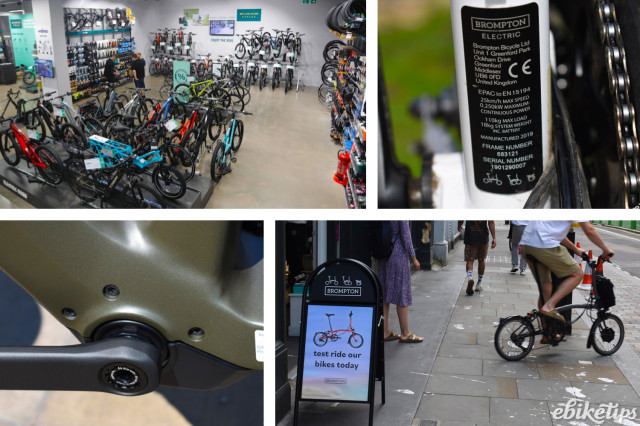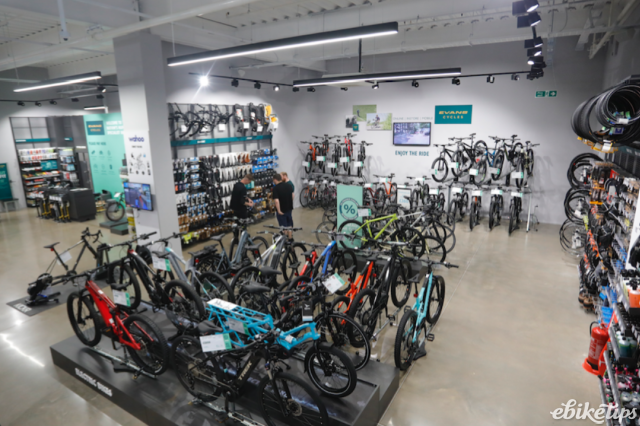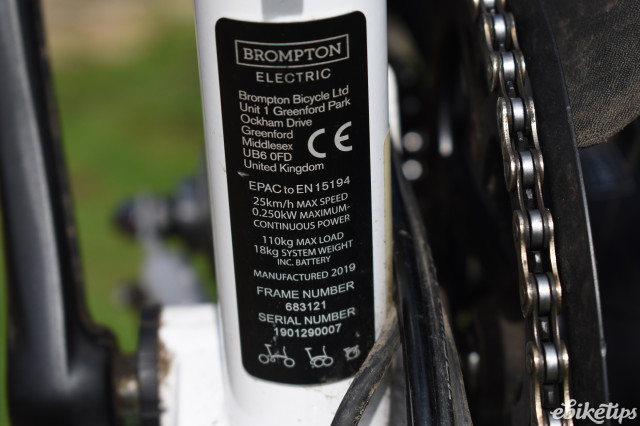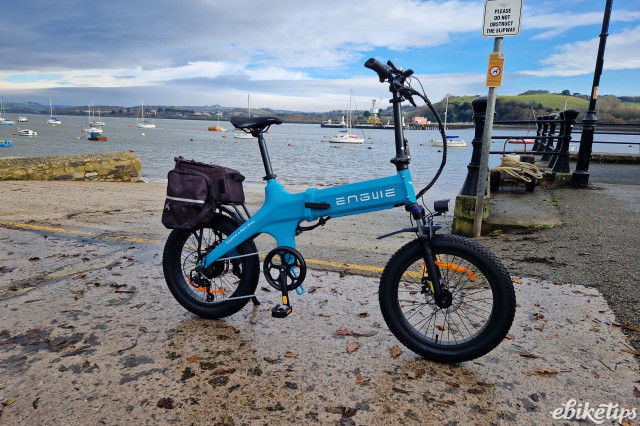With e-bike and e-scooter fire safety hitting the headlines recently (including several times here at ebiketips), you might be forgiven for thinking that light electric vehicles are inherently dangerous. That's far from the truth. As we noted in our article on e-bike batteries, "... just 0.011% of bikes and scooters on the market set on fire last year."
That said, there is clearly an emerging problem at the cut price end of the market with cheap and potentially unreliable batteries and chargers in particular being sold online by the less scrupulous sellers.
E-bike safety isn't just about battery quality though - even if that's a very high profile aspect at the minute. Paying attention to general buying tips, doing basic mechanical checks and looking for the right certification are among the things you can do to ensure you get the safest e-bike possible within your budget.
With that in mind, let's take a look at a few safety dos and don'ts when buying an e-bike, battery or charger.
How to buy a safe e-bike
There are a number of steps you can take to buy the safest possible e-bike. We'll start with the general and move on to more specific things.
1. Buy from a reputable retailer
Giuseppe Capanna, product safety engineer at consumer safety charity Electrical Safety First (ESF), told us: “The most important thing to remember when buying an e-bike is to stick to reputable retailers you know and trust. That way you can have confidence the product meets UK safety standards and has undergone testing. Online marketplaces are not governed by the same safety regulations as high street retailers.”
So if you are totally new to the e-bike world how would you identify reputable retailers? As ESF note in their general guide to buying electrical goods safely online, "It is easy to set yourself up as a trader on popular sites like Amazon Marketplace, eBay and Wish and there is not enough regulation in place to prevent people from using these sites to sell counterfeit and sub-standard electrical products, as well as those that are subject to a product recall due to a serious safety risk."
So be wary of online marketplaces where pricing can be a race to the bottom. Price can certainly be an indication (though not necessarily an absolute guarantee) of high quality.
Premium e-bike manufacturers who often charge several thousand pounds for their products guard their reputation jealously. They know it depends on producing an e-bike that is not only nice to ride when new, but continues to give good service for many years. This means their bikes are much more likely to be built to the best possible standards for the price.
Similarly, large chains or well-established and well-known local retailers are likely to have built their reputations on providing reliable service and not by deciding what to stock based purely on price.
2. Research your brands
Internet e-bike reviews on respected websites (like ebiketips) will throw up plenty of brand names and as a general steer, those in the £2,500 plus range should certainly be made to pretty high quality standards. That's not to say there aren't some great bikes out there significantly below this price point, it's just that a bit more buyer research may be needed to sift out the better ones.
Online marketplaces offer models starting at little more than £250. I'd suggest anything under £1,000, if not outright dangerous, is likely to at least have some serious performance compromises.
The quality of the motor system is another clue to the level of quality and safety standards to which the whole e-bike is made. The 'big five' mid-drive manufacturers of Bosch, Brose, Fazua, Shimano and Yamaha are standout names, while Mahle and Neodrives are premium quality hub motor manufacturers. Again, that's not to say other motor makes are substandard, but again, perhaps a little more research is advisable.
It's worth asking whether a given brand is UK-based and whether it assembles its own e-bikes here. That's normally a good sign as far as build standards go as firms based here clearly have an inherent interest in producing high quality products because any faulty e-bikes are likely to end up back with them. E-bike manufacturers with factories in the UK include Estarli, Mirider and Volt. Also note that Bosch and Shimano have UK-based support teams. Should a problem arise, all these firms should be well placed to fix it quickly and effectively.
3. Inspect the e-bike in person and get a test ride if possible. If it's not possible, follow online buying tips
A good e-bike shop is the obvious port of call here and you might like to take a look at our map of e-bike retailers (though again this isn't comprehensive). Things to check on your ride include a comfortable, correctly-sized frame, effective and smooth brakes, smooth application of motor power and ease of control/steering. Jerky, unreliable pedal sensors can be a particular problem on cheaper e-bikes and many riders feel unsafe using them because of their lack of predictability with regards to when the motor is activated. If you feel comfortable and safe on the e-bike it's clearly more likely that you will actually be so when riding.
If you can't get to a shop, some retailers can arrange for a test ride at your house - the Electric Bike Store being just one example.
A close visual once over is important too. Do the wiring and cable runs look neat? Do the wheels run smoothly and cleanly in the frame when you spin them, and are all nuts and bolts tightened? If weight is important to you then a physical inspection will mean you can pick the bike up yourself and check that.
You may want a longer tryout before deciding you feel comfortable and safe on the e-bike and that you are happy with it in every respect. In this case subscription may be an option and this is offered by an increased number of brands. Estarli and Volt are two of the most recent UK-based firms to offer this as an option via the specialist subscription platform Blike.
If inspecting in person just isn't possible, then it's worth reiterating the main points that ESF make in that general guide to electrical online buying, which can be summarised as:
- Beware of unanimous glowing reviews, especially if the reviewers aren’t verified (Some sites cross-reference user reviews with their buyer database and label those people as 'verified purchasers').
- Know where you’re buying from - i.e. make sure you know where the supplier is based. A 'co.uk' URL doesn’t guarantee the website is UK based. If there is no address supplied, or there is just a PO Box, be wary as this could be a sign of overseas manufacture done to minimal safety standards.
- Beware of words qualifying an item's authenticity. If the seller claims the product is 'genuine', 'CE certified' or 'approved', double check the source. Reputable manufacturers often don't feel the need to say things like this as they take it as a given the e-bike is made to the relevant safety standards.
- Look for websites that allow you to pay safely with a padlock symbol in the address bar of the website you are visiting. Don't use those that don't.
4. Make sure the e-bike has an EN15194 marking (2017 is the most up to date standard)
An EN15194 sticker or plate should appear on the e-bike and often contains other useful information such as that detailed above on a Brompton Electric model.
At the very least, the presence of this standard means that the bike should not be dangerously and illegally fast and/or powerful, sticking to the 250W continuous motor output and 15.5mph assist limit as laid out in the relevant European regulations and which the UK government still adheres to.
As part of EN15194, testing should have been carried out on engine power management systems and other electrical circuits, including the charging system, as well as mechanical parts of the e-bike. This will cover handlebar strength, frame, tyres, suspension and so on.
EN17404 was introduced in 2022, specifically for e-MTBs, and whilst it includes EN15194, according to certification specialists Entecerma, it also has, "a different set of tests with more stringent criteria, particularly regarding the mechanical/structural part."
On the UK market, Bosch and Aventon are the only manufacturers I know of offering full UL2849 certification. Whilst UL2894 is a US standard and so e-bikes that are sold in the UK don't legally need to have it and won't be marked with it, the fact these companies use what is recognised as a gold standard of independent testing is certainly very encouraging.
In time others from the US market, where UL certified e-bikes are more prevalent, may make their way over here - for example Addpower and Velotric are US brands offering UL2894. It's notable that like Aventon they offer very reasonably priced e-bikes.
5. Check product recalls and register your warranty
Register your product with the manufacturer to validate any warranties and make it easier for manufacturers to contact you in the event of a safety issue, e.g. a product recall.
You can also check if products have been recalled by visiting the government Product Recalls and Alerts website.
How to buy a safe replacement battery or battery charger
Batteries wear out (although the better ones will likely take several years to do so), while battery chargers break or get lost. At some point you may find that one or the other needs replacing. For both batteries and battery chargers, the most important piece of advice is to buy an 'original' replacement - that is to say one that comes directly from the manufacturer or the retailer that sold you the e-bike.
The dangers of using an incorrect charger are huge. This risks supplying the battery with too much voltage, which can damage the cells and cause a process called thermal runaway. ESF has released a video demonstrating the speed and ferocity with which the resultant blaze can take hold.
It is for this reason that ESF is calling for a ban on the sale of universal chargers for micromobility vehicles or the introduction of standards for non-proprietary charging systems.
But what if your original seller is no longer in business? This is a significant problem which we have previously investigated in our article 'Old worn-out e-bike batteries: repair, recycle, refurbish or replace?'
In short, if the original battery is no longer available, it may be possible to buy a 'non-original' (third party) replacement or even get your defunct battery recelled. However, you should proceed with caution as there are inexpert as well as expert firms out there offering these services. You can find out more in that article.
It's worth stating that there are currently no mandatory battery standards that such firms can work to, though if the UK follows a trend emerging in the US, it may be that UL2271 becomes the new standard for e-bike battery manufacture and becomes enshrined in law. UL 62368-1 is another standard dealing with battery charger safety and again that may become mandatory if the UK government does decide to tighten regulations.
There are many factors that go towards ensuring a well-made, safe battery, as outlined in our piece looking at the difference between a safe e-bike battery and a fire risk.














